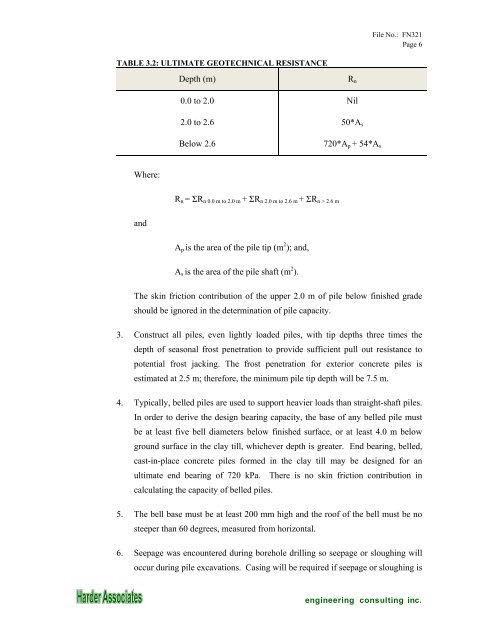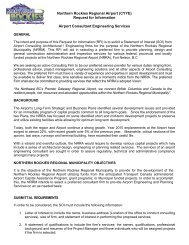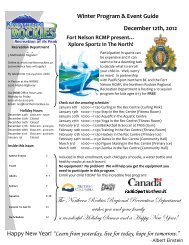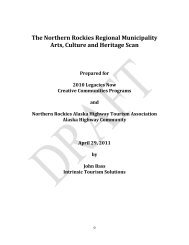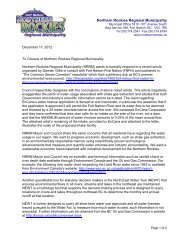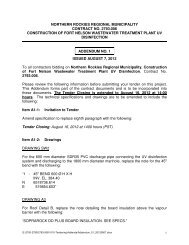SPECIFICATIONS
Tender Documents.pdf - Northern Rockies Regional Municipality
Tender Documents.pdf - Northern Rockies Regional Municipality
You also want an ePaper? Increase the reach of your titles
YUMPU automatically turns print PDFs into web optimized ePapers that Google loves.
File No.: FN321<br />
Page 6<br />
TABLE 3.2: ULTIMATE GEOTECHNICAL RESISTANCE<br />
Depth (m)<br />
R n<br />
0.0 to 2.0 Nil<br />
2.0 to 2.6 50*A s<br />
Below 2.6<br />
720*A p + 54*A s<br />
Where:<br />
R n = ΣR n 0.0 m to 2.0 m + ΣR n 2.0 m to 2.6 m + ΣR n > 2.6 m<br />
and<br />
A p is the area of the pile tip (m 2 ); and,<br />
A s is the area of the pile shaft (m 2 ).<br />
The skin friction contribution of the upper 2.0 m of pile below finished grade<br />
should be ignored in the determination of pile capacity.<br />
3. Construct all piles, even lightly loaded piles, with tip depths three times the<br />
depth of seasonal frost penetration to provide sufficient pull out resistance to<br />
potential frost jacking. The frost penetration for exterior concrete piles is<br />
estimated at 2.5 m; therefore, the minimum pile tip depth will be 7.5 m.<br />
4. Typically, belled piles are used to support heavier loads than straight-shaft piles.<br />
In order to derive the design bearing capacity, the base of any belled pile must<br />
be at least five bell diameters below finished surface, or at least 4.0 m below<br />
ground surface in the clay till, whichever depth is greater. End bearing, belled,<br />
cast-in-place concrete piles formed in the clay till may be designed for an<br />
ultimate end bearing of 720 kPa. There is no skin friction contribution in<br />
calculating the capacity of belled piles.<br />
5. The bell base must be at least 200 mm high and the roof of the bell must be no<br />
steeper than 60 degrees, measured from horizontal.<br />
6. Seepage was encountered during borehole drilling so seepage or sloughing will<br />
occur during pile excavations. Casing will be required if seepage or sloughing is


